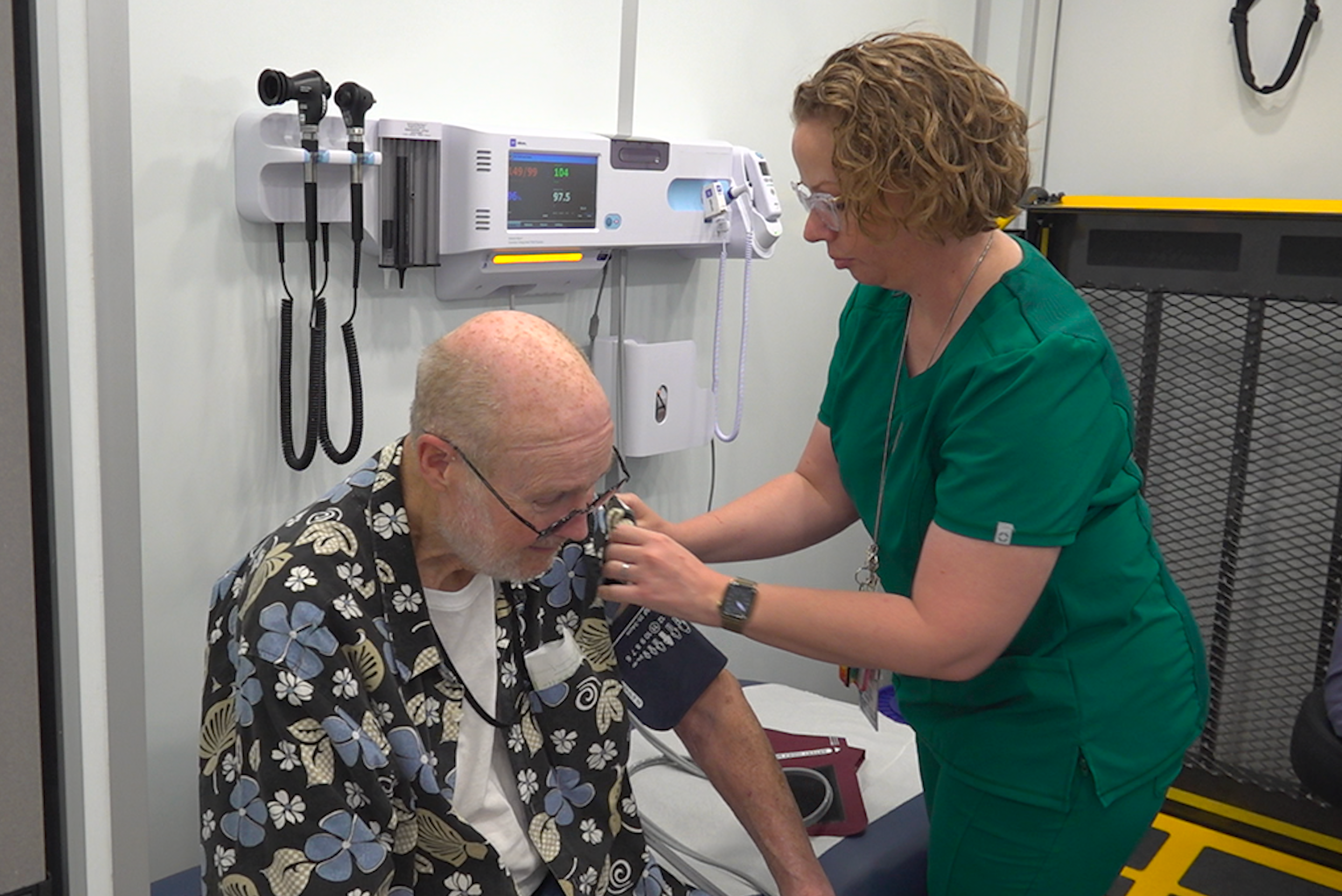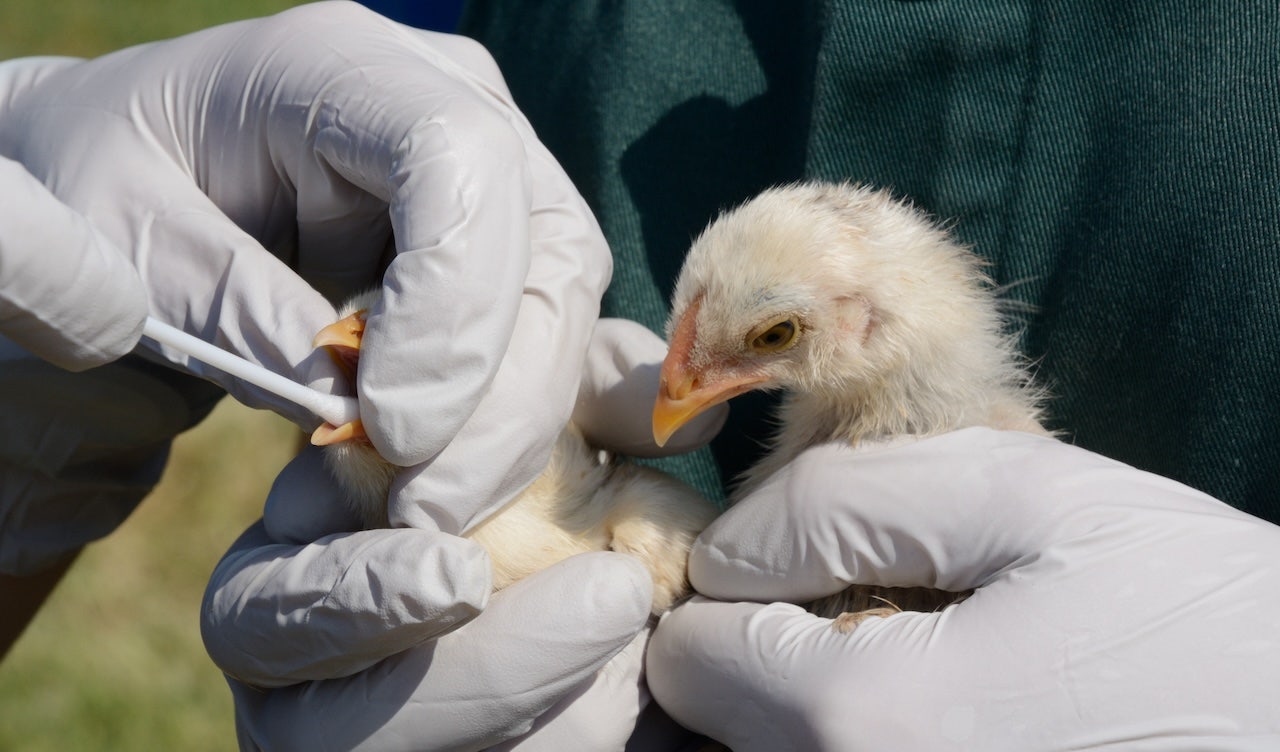Health
Mobile medical clinics bring health care directly to homeless veterans in 25 cities

Las Vegas, Nevada – More than 35,000 veterans in America are homeless — and health care is not always their top priority.
The U.S. Department of Veterans Affairs (VA) aims to bridge that gap by bringing medical care to homeless vets.
“The mobile medical unit is a physical truck or van that goes out into the community setting and brings … health care services, those wraparound resources, directly to veterans in the community setting to reduce the barrier of transportation, which is a very significant barrier for this population,” Dr. Jillian Weber, national program manager for Homeless Patient Aligned Care Teams in Nevada, told Fox News.
AMERICA’S WAR HEROES BURIED OVERSEAS REMAIN DEFENDERS OF LIBERTY: THEY ‘CONTINUE TO SERVE’
Morgan Spicer, who served in the Air Force before retiring in 1990, is currently staying at the Salvation Army shelter in Las Vegas.
When he needs to get a checkup at the clinic, Spicer said it’s typically been a day-long affair.
Morgan Spicer, who retired from the Air Force in 1990, is currently staying at the Salvation Army. He is pictured here receiving medical care in a mobile unit. (Sunny Tsai)
“If you have an appointment at the hospital, you have to take the Salvation Army bus up there, you have to go at 7:30 am, and then you either have to take a civilian bus back or wait until 1 in the afternoon until he picks you up,” Spicer told Fox News.
But now, the VA’s mobile medical team brings the clinic directly to its patients.
“I just had to walk out the front door,” Spicer said.
“It’s literally a clinic on wheels.”
Elizabeth Jarman, a coordinator for VA Southern Nevada Health Care, told Fox News how the initiative works.
“We go out to one of our community shelters or our transitional housing sites, and we are usually there from 9 a.m. to 2 p.m.,” she said.

Morgan Spicer, a homeless veteran, has found health care to be much easier with the mobile medical units. “I just had to walk out the front door,” said Spicer, pictured here. (Sunny Tsai)
“We’re able to see veterans all day long, and then drive [the bus] back to the hospital. So, veterans are able to access primary care on it.”
Jarman added, “It’s everything that you would do in a regular primary care clinic. It’s literally a clinic on wheels.”
VIETNAM VETERAN REUNITES WITH LOST DOG TAG AFTER 56 YEARS: ‘I DIDN’T BELIEVE IT’
The portable clinics are available in 25 cities across the nation, including Los Angeles, Orlando, Chicago and Seattle.
“We know from evidence that veterans experiencing homelessness have unmet health care needs, and they face numerous barriers and challenges to not only accessing medical services and resources, but also engaging in long-term care,” Weber noted.

The mobile medical unit team in Las Vegas is pictured outside the unit. (Sunny Tsai)
The mobile units are just one way the VA is trying to fight veteran homelessness — by providing them first with housing and then with health care and other support, according to the team.
CLICK HERE TO READ MORE ON FOX NEWS
To learn more, or to reach out, anyone can check out details at va.gov/homeless/nationalcallcenter/asp.
For more Health articles, visit www.foxnews.com/health.

Health
How The Great British Bake Off Host Alison Hammond Lost 150 Lbs Naturally

Sign Up
Create a free account to access exclusive content, play games, solve puzzles, test your pop-culture knowledge and receive special offers.
Already have an account? Login
Use left and right arrow keys to navigate between menu items.
Use escape to exit the menu.
Health
One state leads country in human bird flu with nearly 40 confirmed cases

A child in California is presumed to have H5N1 bird flu, according to the San Francisco Department of Public Health (SFDPH).
As of Dec. 23, there had been 36 confirmed human cases of bird flu in the state, according to the California Department of Public Health (CDPH).
This represents more than half of the human cases in the country.
LOUISIANA REPORTS FIRST BIRD FLU-RELATED HUMAN DEATH IN US
The latest pediatric patient, who lives in San Francisco, experienced fever and conjunctivitis (pink eye) as a result of the infection.
The unnamed patient was not hospitalized and has fully recovered, according to the SFDPH.
A child in California is presumed to have H5N1 bird flu, according to the San Francisco Department of Public Health. (iStock)
The child tested positive for bird flu at the SFDPH Public Health Laboratory. The U.S. Centers for Disease Control and Prevention (CDC) will perform additional tests to confirm the result.
CLICK HERE TO SIGN UP FOR OUR HEALTH NEWSLETTER
It is not yet known how the child was exposed to the virus and an investigation is ongoing.
“I want to assure everyone in our city that the risk to the general public is low, and there is no current evidence that the virus can be transmitted between people,” said Dr. Grant Colfax, director of health, in the press release.
BIRD FLU PATIENT HAD VIRUS MUTATIONS, SPARKING CONCERN ABOUT HUMAN SPREAD
“We will continue to investigate this presumptive case, and I am urging all San Franciscans to avoid direct contact with sick or dead birds, especially wild birds and poultry. Also, please avoid unpasteurized dairy products.”
Samuel Scarpino, director of AI and life sciences and professor of health sciences at Northeastern University in Boston, is calling for “decisive action” to protect individuals who may be in contact with infected livestock and also to alert the public about the risks associated with wild birds and infected backyard flocks.

An infectious diseases expert called for “decisive action” to alert the public about the risks associated with wild birds and infected backyard flocks. (iStock)
“While I agree that the risk to the broader public remains low, we continue to see signs of escalating risk associated with this outbreak,” he told Fox News Digital.
Experts have warned that the possibility of mutations in the virus could enable person-to-person transmission.
“While the H5N1 virus is currently thought to only transmit from animals to humans, multiple mutations that can enhance human-to-human transmission have been observed in the severely sick American,” Dr. Jacob Glanville, CEO of Centivax, a San Francisco biotechnology company, told Fox News Digital.

As of Jan. 10, there have been a total of 707 infected cattle in California, per reports from the California Department of Food and Agriculture. (iStock)
“This highlights the requirement for vigilance and preparation in the event that additional mutations create a human-transmissible pandemic strain.”
As of Jan. 10, there have been a total of 707 infected cattle in California, per reports from the California Department of Food and Agriculture (CDFA).
For more Health articles, visit www.foxnews.com/health
In the last 30 days alone, the virus has been confirmed in 84 dairy farms in the state.
Health
Chronic Pain Afflicts Billions of People. It’s Time for a Revolution.

“In the beginning, everyone thought they were going to find this one breakthrough pain drug that would replace opioids,” Gereau said. Increasingly, though, it’s looking like chronic pain, like cancer, could end up having a range of genetic and cellular drivers that vary both by condition and by the particular makeup of the person experiencing it. “What we’re learning is that pain is not just one thing,” Gereau added. “It’s a thousand different things, all called ‘pain.’”
For patients, too, the landscape of chronic pain is wildly varied. Some people endure a miserable year of low-back pain, only to have it vanish for no clear reason. Others aren’t so lucky. A friend of a friend spent five years with extreme pain in his arm and face after roughhousing with his son. He had to stop working, couldn’t drive, couldn’t even ride in a car without a neck brace. His doctors prescribed endless medications: the maximum dose of gabapentin, plus duloxetine and others. At one point, he admitted himself to a psychiatric ward, because his pain was so bad that he’d become suicidal. There, he met other people who also became suicidal after years of living with terrible pain day in and day out.
The thing that makes chronic pain so awful is that it’s chronic: a grinding distress that never ends. For those with extreme pain, that’s easy to understand. But even less severe cases can be miserable. A pain rating of 3 or 4 out of 10 sounds mild, but having it almost all the time is grueling — and limiting. Unlike a broken arm, which gets better, or tendinitis, which hurts mostly in response to overuse, chronic pain makes your whole world shrink. It’s harder to work, and to exercise, and even to do the many smaller things that make life rewarding and rich.
It’s also lonely. When my arms first went crazy, I could barely function. But even after the worst had passed, I saw friends rarely; I still couldn’t drive more than a few minutes, or sit comfortably in a chair, and I felt guilty inviting people over when there wasn’t anything to do. As Christin Veasley, director and co-founder of the Chronic Pain Research Alliance, puts it: “With acute pain, medications, if you take them, they get you over a hump, and you go on your way. What people don’t realize is that when you have chronic pain, even if you’re also taking meds, you rarely feel like you were before. At best, they can reduce your pain, but usually don’t eliminate it.”
A cruel Catch-22 around chronic pain is that it often leads to anxiety and depression, both of which can make pain worse. That’s partly because focusing on a thing can reinforce it, but also because emotional states have physical effects. Both anxiety and depression are known to increase inflammation, which can also worsen pain. As a result, pain management often includes cognitive behavioral therapy, meditation practice or other coping skills. But while those tools are vital, it’s notoriously hard to reprogram our reactions. Our minds and bodies have evolved both to anticipate pain and to remember it, making it hard not to worry. And because chronic pain is so uncomfortable and isolating, it’s also depressing.
-

 Politics1 week ago
Politics1 week agoWho Are the Recipients of the Presidential Medal of Freedom?
-

 Health1 week ago
Health1 week agoOzempic ‘microdosing’ is the new weight-loss trend: Should you try it?
-
/cdn.vox-cdn.com/uploads/chorus_asset/file/25822586/STK169_ZUCKERBERG_MAGA_STKS491_CVIRGINIA_A.jpg)
/cdn.vox-cdn.com/uploads/chorus_asset/file/25822586/STK169_ZUCKERBERG_MAGA_STKS491_CVIRGINIA_A.jpg) Technology4 days ago
Technology4 days agoMeta is highlighting a splintering global approach to online speech
-

 News1 week ago
News1 week agoSeeking to heal the country, Jimmy Carter pardoned men who evaded the Vietnam War draft
-

 Science2 days ago
Science2 days agoMetro will offer free rides in L.A. through Sunday due to fires
-

 News1 week ago
News1 week agoTrump Has Reeled in More Than $200 Million Since Election Day
-

 News1 week ago
News1 week agoThe U.S. Surgeon General wants cancer warnings on alcohol. Here's why
-

 World1 week ago
World1 week agoCalls for boldness and stability at Bayrou's first ministers' meeting


















